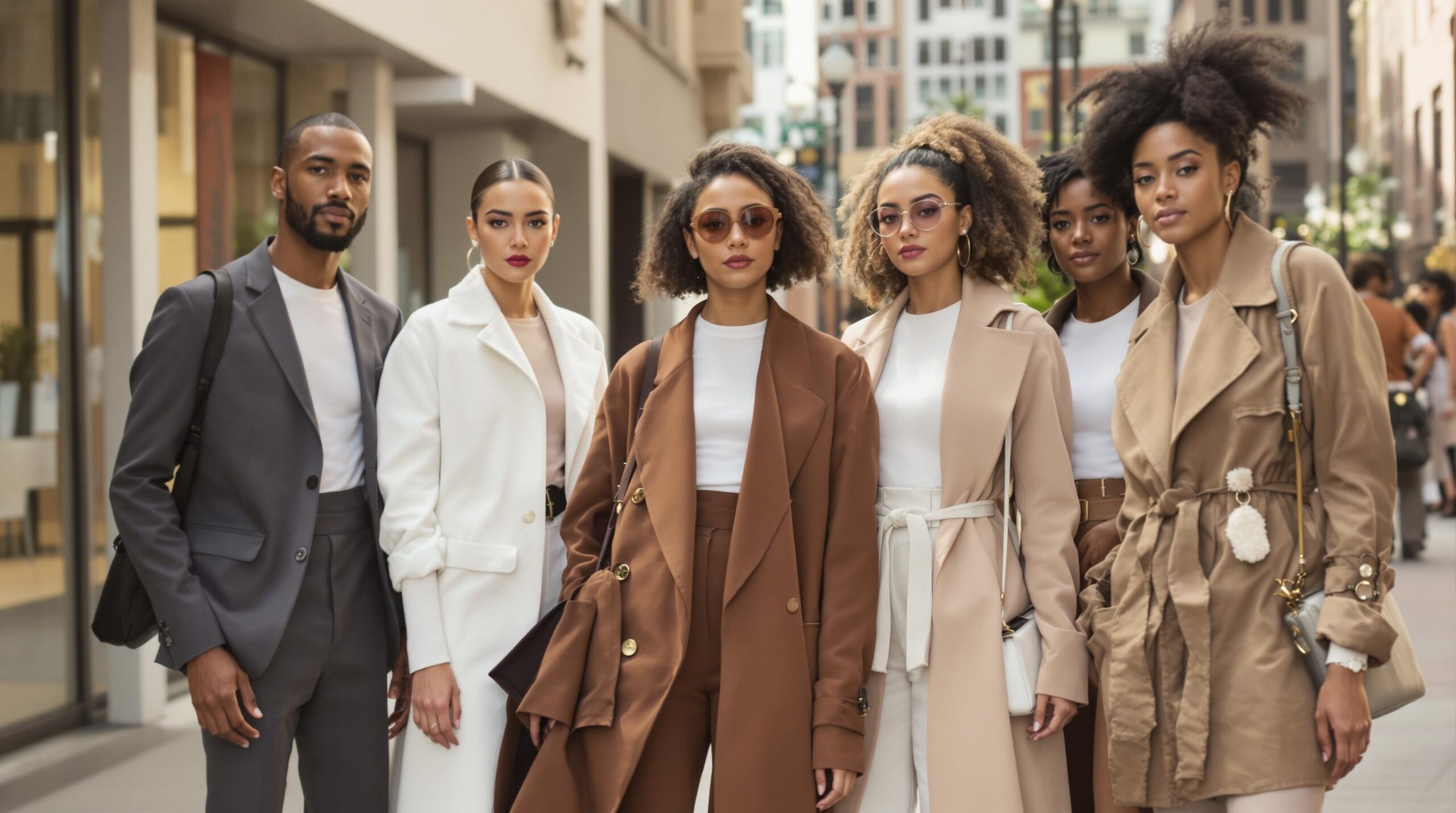Minimalist fashion has evolved into a quintessential component of contemporary wardrobes. Characterized by simplicity and functionality, it transcends fleeting trends. Despite its seemingly understated nature, minimalist fashion has maintained a consistent appeal over the decades. It caters to those who appreciate timeless elegance and practicality in their clothing choices.
Origins and Evolution of Minimalist Fashion
Minimalism in fashion traces back to the 1960s as a reaction against elaborate styles. Designers like Coco Chanel championed simplicity, advocating for styles embodying grace and effortless chic. This approach was further cemented by designers such as Calvin Klein and Jil Sander in the 1990s. They embraced clean lines and neutral palettes that became synonymous with minimalist fashion.
These pioneers emphasized quality over quantity, using minimal embellishments. Their designs focused on structured garments and versatile pieces. This philosophy continues to underpin minimalist fashion today. As modern consumers become more conscious of spending, the appeal of timeless, quality pieces grows stronger.
Core Principles of Minimalist Fashion
Minimalist fashion hinges on the principle of “less is more.” It thrives on the subtlety and elegance of well-cut garments. Rather than obscuring the wearer’s personality, it allows them to shine. This fashion philosophy encourages investing in high-quality fabrics and craftsmanship. It values long-lasting items over transient fashion fads.
Neutral colors dominate minimalist wardrobes. Black, white, navy and earth tones offer versatility and classic appeal. These hues make styling simple, allowing easy mixing and matching. The emphasis is on creating a cohesive look with fewer pieces.
The Allure of Versatility and Simplicity
Minimalist fashion’s allure lies in its versatility and simplicity. A minimalist wardrobe comprises pieces that can easily transition from casual to formal. This adaptability reduces the pressure of frequent shopping to keep up with trends. It offers both financial and environmental benefits by fostering sustainable consumption habits.
Simple designs also provide wearers with a sophisticated and polished appearance. Clean lines, uncomplicated patterns, and unfussy silhouettes dominate—such styles project confidence and elegance without ostentation. Consequently, minimalism resonates with individuals seeking understated sartorial expressions.
Impact of Technology and Social Media
Technology and social media have played pivotal roles in amplifying minimalist fashion. Platforms like Instagram showcase minimalist aesthetics to millions worldwide. Influencers and designers share their pared-back styles, inspiring audiences to adopt minimalism. Digital frontiers offer a global stage for promoting minimalist brands and philosophies.
Furthermore, e-commerce advancements have made minimalist fashion more accessible. Consumers can purchase pieces that align with minimalist values effortlessly. Online platforms curate tasteful selections, catering to those prioritizing aesthetics and sustainability. This convenience attracts a new generation to minimalist fashion.
Sustainability: A Driving Force Behind Minimalism
Environmental concerns have heightened interest in sustainable fashion practices. Minimalist fashion naturally aligns with these ideals, emphasizing quality over quantity. Consumers are increasingly aware of fashion’s environmental impact. Consequently, they opt for garments that endure both in style and wear.
Brands adopting minimalist principles often emphasize ethical production processes and eco-friendly materials. This commitment to sustainability resonates with environmentally conscious consumers. By investing in lasting pieces, individuals reduce fashion waste considerably. Thus, minimalism supports a more responsible and sustainable fashion industry.
Psychological Benefits of a Minimalist Wardrobe
A minimalist wardrobe offers psychological benefits as well. By decluttering closet spaces, individuals experience decreased decision fatigue. Streamlined clothing options simplify daily routines, fostering a sense of control and clarity. The focus shifts from accumulating new items to styling existing ones creatively.
Furthermore, a minimalist wardrobe encourages mindful consumption. It prompts individuals to evaluate the value and purpose of each piece they own. This practice instills gratitude and contentment, lessening the need for constant acquisition. Consequently, individuals achieve a more balanced relationship with their wardrobe.
Minimalist Fashion Icons and Influencers
Numerous fashion icons and influencers have championed minimalist fashion over the years. Creative visionaries like Steve Jobs famously adopted a uniform approach. His trademark black turtleneck and jeans epitomized minimalist style.
Contemporary influencers continue to shape perceptions of minimalism. Figures like Meghan Markle and Victoria Beckham exemplify modern minimalist aesthetics. Their refined and elegant outfits inspire followers to embrace simplicity. These influencers highlight how minimalist fashion can be both chic and versatile.
The Role of Minimalism in Personal Expression
While minimalist fashion focuses on simplicity, it simultaneously allows for personal expression. Individuals curate their wardrobes to reflect their tastes without overwhelming embellishments. This clarity in style communicates confidence and authenticity.
Minimalism encourages creativity within constraints. By limiting options, individuals explore different ways of styling the same items. A minimalist approach inspires innovation, facilitating unique sartorial choices. Thus, minimalism empowers individuals to develop their style distinctively.
Challenges of Adopting Minimalist Fashion
Adopting minimalist fashion poses challenges for some individuals. The initial investment in high-quality pieces can be expensive. However, proponents argue that these items pay off over time. They often outlast multiple cheaper alternatives, proving economical in the long run.
Additionally, transitioning to a minimalist wardrobe involves a mindset shift. It requires letting go of the desire for constant novelty. Those accustomed to trend-driven fashion may find this change difficult. Nonetheless, the benefits often outweigh these initial hurdles.
The Future of Minimalist Fashion
As the fashion industry gradually shifts towards sustainability, minimalism will likely grow in popularity. Consumers increasingly seek authenticity and meaning in their purchases. Minimalist fashion meets these desires, offering style without compromising ethics.
Technology will continue enhancing accessibility to minimalist options. Virtual closets and styling apps will simplify wardrobe management further. These advancements will cater to minimalist enthusiasts, supporting their quest for simple yet elegant fashion statements. Consequently, minimalist fashion is poised to remain relevant well into the future.
Conclusion
Minimalist fashion appeals to those who value timeless elegance and sustainability in their clothing choices. Its core principles of simplicity, functionality, and versatility resonate across generations. Despite challenges, it continues to evolve, adapting to modern consumer needs and desires. As the world embraces more conscientious practices, minimalist fashion demonstrates its timeless allure.

